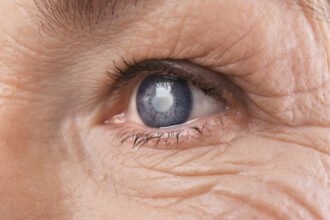Bunions are common in women – it is a deformity of the BMT (metatarsophalangeal) joint found at the base of your big toe. This usually happens when the metatarsal bone turns outward when the big toe is pointing inwards, and this results in the joint jutting out. The deformity is known as hallux valgus in Latin (hallux is the Latin name for the big toe while valgus refers to turning away from the body’s midline). The misaligned joint experiences a lot of pressure because many shoes today are not accommodating, and this means the resulting protrusion puts some pressure. When this happens the bursa (this is a fluid-filled sac surrounding and cushioning the joint) starts becoming inflamed, and this ends up making the joint painful and stiff. Anatomy of a bunion The mostly way the bunion develops is through a susceptible foot being squeezed repeatedly into pointed and narrow-toe footwear. The makes the big toe to be pushed against the other toes, and in some instances the big toe dives under or over the other ones. The base of the big toe will jut or angle out from the foot. There is a process followed when judging the severity of a bunion. Clinicians will take an x-ray of the foot then measure the angle created between the bones in the foot. Johns Hopkins University says that there are different factors have been shown to trigger bunions, with one being shoes, although they are not the cause of this condition. They run in families because the type of foot (in terms of structure and shape) is hereditary. Some are more prone to this condition more than others. Flat feet, low arches, and loose joints and tendons have been shown to have an impact when it comes to increasing the risks of getting bunions. The shape of the top of the first metatarsal bone has been shown to affect; when it is too round, there is less stability in the joint and this makes it more likely to deform when it is squeezed inside a shoe that has narrow toes. High heels can also trigger bunions because they cause the weight of the body to tip forward, which forces the toes to move to the front of the shoe. This could be one of the explanations as to why bunions are ten times more common in women when compared to men. People working in areas such as nursing and teaching also have a higher risk of bunions because their jobs involve a lot of walking and standing. During pregnancy, women can develop different foot problems including bunions because there is a lot of hormonal changes taking place in their body, and this results in the loosening of the ligament and flattening of the feet. Arthritis has also been associated with bunions because it results in damage to the cartilage. There are measures you can use to prevent bunions from getting worse and relieve pain. The measures involve taking the pressure off the MTP joint and improving the foot mechanics. There is no need for surgery for bunions, but there are instances when the deformity cannot be corrected and the pain is becoming too much. Why you need to give bunions attention The MTP joint is responsible for helping us in bearing and distributing weight when doing different activities. A bunion is located at an area near the tendons, bones, and ligaments, and this can easily affect the functioning of the foot. Other toes can be damaged as a result of bunions on the big toe. The big toe can become bent or develop corns when exposed to pressure, resulting in hammertoes. Calluses might form on the bottom of the foot because the nails might become ingrown. If you keep shifting the weight of your body off the big toe because of pain to other toes, it can result in a lot of discomfort. You might be forced to avoid some activities such as exercising if the joint becomes very uncomfortable because you will have a hard time fitting into shoes. Foot disorders have become a major cause for sedentary habits and disability, especially in older women. The risks of bunions increase with age, and they also become more severe with age, which lowers the quality of the person affected. Go for treatment if you find the deformity or pain interfering with physical activity and daily routines. Conservative treatment Start by relieving the pressure on your toe by choosing the right kind of shoe. (Maintaining a normal weight is also important). The shoes you choose should have a wide and flexible sole that will be able to provide enough support for the foot and also enough room for the toes, so it can provide enough accommodation for the bunion. Athletic shoes, sandals, and shoes made from soft leather are some great choices. You can use stretchers to reshape shoes you like that are narrow to make enough room for the bunion, when wearing shoes that have heels, make sure they are not higher than one inch. You can buy a gel-filled pad or moleskin from a drugstore because it will protect the bunion (Before you buy it, make sure the shoes will be able to accommodate it) Semisoft orthoses can be recommended by a clinician because it helps in correctly positioning the foot when it hits the ground. Another option is wearing a splint at night so that it eases discomfort and hold your toe straight. If you start feeling pain or irritation in the bunion, use ice packs, warm socks, and nonsteroidal anti-inflammatory drugs like ibuprofen or aspirin. Some other forms of relief are a whirlpool, massage, and ultrasound. There is also the option of cortisone injection, which is effective in temporarily relieving pain because it reduced inflammation, but it comes with some side effects.
A Guide to Caring for Bunions
John Henning is a nutritionist, freelance writer, and food blogger that provides accessible nutrition info to help people live a healthier life. His unique approach to nutrition emphasizes nutrient-dense, whole foods and healthy habits rather than restrictive diets.







